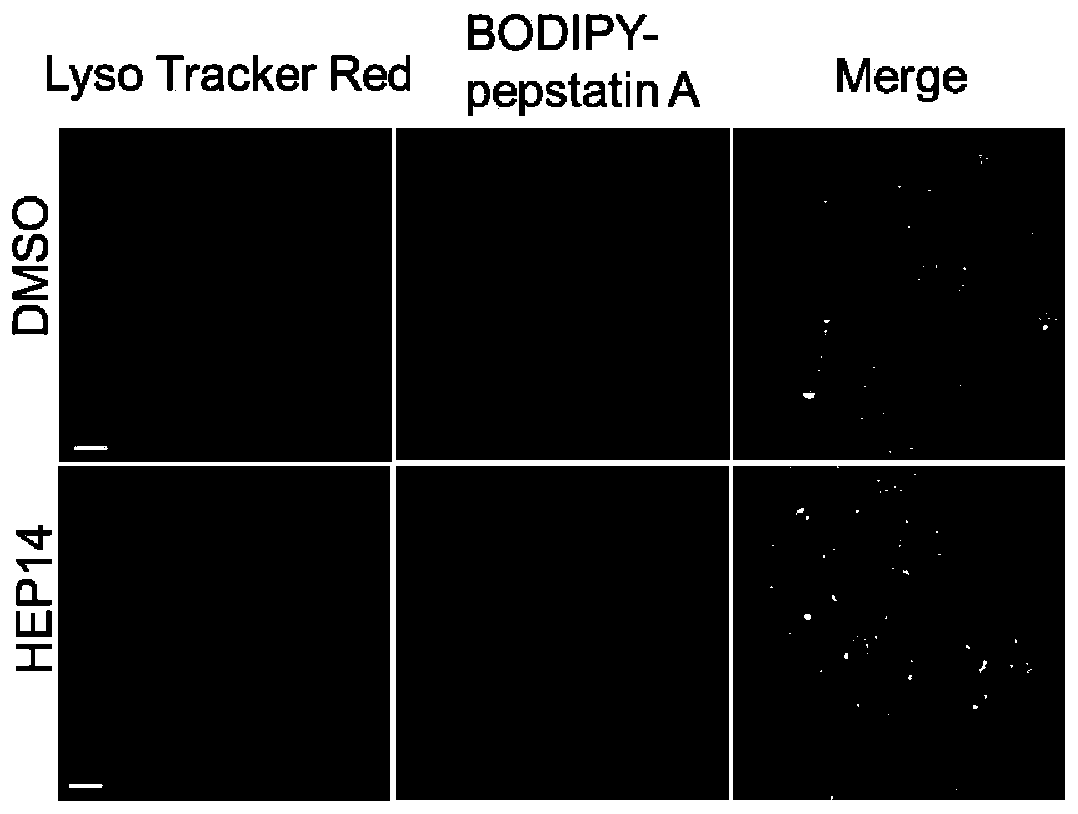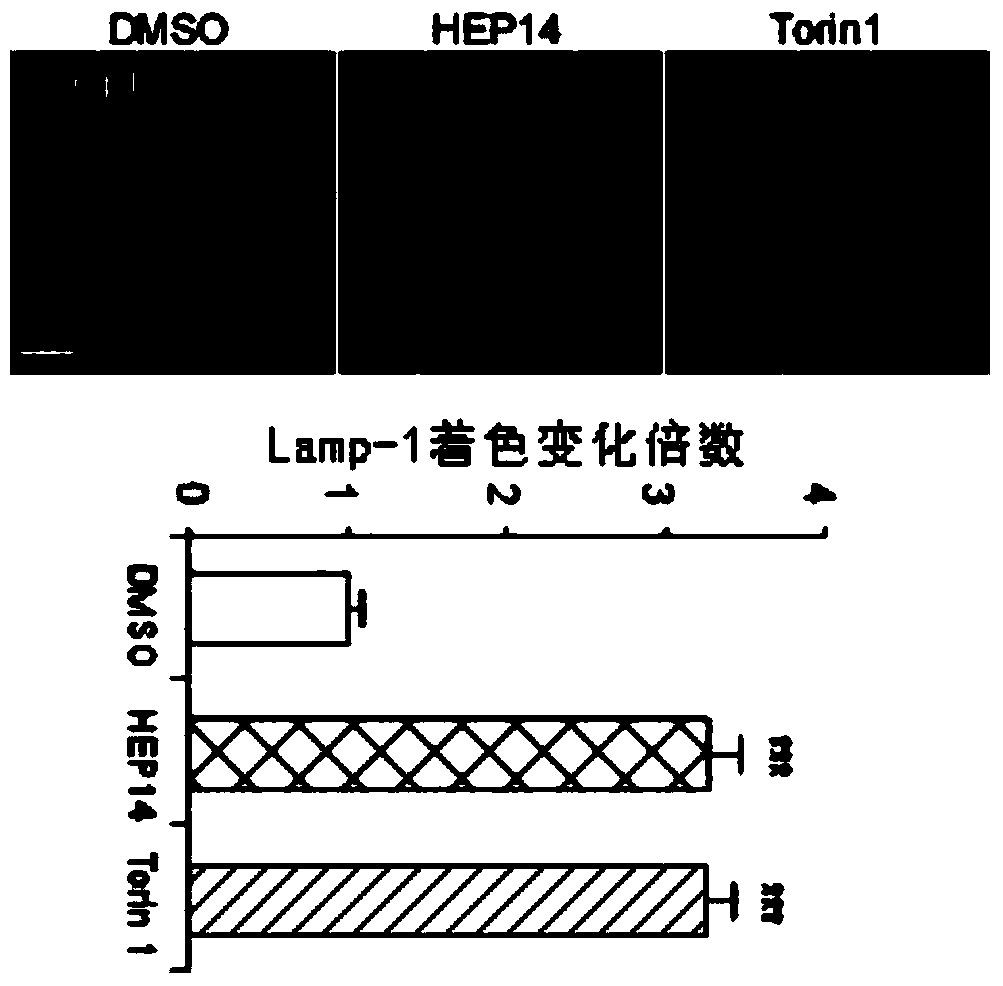Application of ingenol and its derivatives in enhancing lysosome production
A lysosome and drug technology, applied in the field of application of ingenol HEP14 and its derivatives in enhancing lysosome production, can solve the problem that the signaling pathway has not been reported yet
- Summary
- Abstract
- Description
- Claims
- Application Information
AI Technical Summary
Problems solved by technology
Method used
Image
Examples
Embodiment 1
[0084] Example 1, Preparation and identification of HEP14 and its derivatives
[0085] 1. Preparation and identification of HEP14 and HEP15
[0086] (1) Preparation of HEP14 and HEP15
[0087] With dried Euphorbia peplus Linn. whole herb (9.5 kg), heat reflux extraction with 95% ethanol for 4 times (extraction time is successively 5, 4, 3, 3 hours) and then filter, combine the filtrates, and reclaim the ethanol Then add water to suspend, and then extract with petroleum ether and chloroform sequentially, each time extracting 4 times with equal volume, and recover the extraction solvent under reduced pressure to obtain petroleum ether extraction fraction (about 299 g) and chloroform extraction fraction (about 17 g). Then the petroleum ether extraction part was subjected to 200-300 mesh silica gel column chromatography, gradient elution with petroleum ether-acetone mixed solvent (petroleum ether / acetone: 1:0→0:1), and detected by thin layer chromatography (TLC). Combined, 6 fra...
Embodiment 2
[0107] Example 2, HEP14 induces lysosome generation
[0108] 1. Lyso Tracker Red staining method to detect the regulation of HEP14 on lysosome production
[0109] Treat HeLa cells with HEP14 compound, and then use LysoTracker Red staining method to observe the coloring of LysoTracker to observe the changes in the number of lysosomes. The specific operation is as follows:
[0110]HeLa cells were treated with different concentrations of HEP14 compounds (0 μM, 10 μM, 20 μM, 40 μM, and the solvent was DMSO). After 3 hours, the cells treated with different treatments were placed in 0.3 μM Lyso Tracker Red DND-99 (product of Invitrogen, Inc., The product catalog number is L7528) culture medium for 30min, and then on the one hand, direct laser confocal observation and imaging; on the other hand, adopt PBS suspension cells to sort through flow cytometer FACSAria II, and finally use FlowJo software for statistics, Get the number of lysosomes. In the experiment, Torin1, an mTORC1 inh...
Embodiment 3
[0119] Example 3, HEP14 compound induces TFEB protein to enter the nucleus
[0120] 1. Detection of the effect of HEP14 on the expression of TFEB and TFE3 target genes
[0121] Hela cells were treated with HEP14 at a concentration of 20 μM for 3 hours, and the effect of HEP14 on the expression of TFEB and TFE3 target genes in cells was detected with Hela cells not treated with HEP14 (replaced with an equal amount of DMSO) as a control. The specific operation is as follows: the RNA in the cell sample is extracted with Trizol (Invitrogen) and chloroform and then quantified, 2 μg of each sample is taken as a template, and cDNA is synthesized with ImProm-II Reverse Transcription system (Promega), and the subsequent PCR reaction is carried out in MX3000P (Agilent Technologies) instrument, each sample was repeated three times, and the internal reference gene was GAPDH. Data analysis using 7900HT Fast Real-Time PCR system software.
[0122] The results showed that after HEP14 treat...
PUM
 Login to View More
Login to View More Abstract
Description
Claims
Application Information
 Login to View More
Login to View More - R&D
- Intellectual Property
- Life Sciences
- Materials
- Tech Scout
- Unparalleled Data Quality
- Higher Quality Content
- 60% Fewer Hallucinations
Browse by: Latest US Patents, China's latest patents, Technical Efficacy Thesaurus, Application Domain, Technology Topic, Popular Technical Reports.
© 2025 PatSnap. All rights reserved.Legal|Privacy policy|Modern Slavery Act Transparency Statement|Sitemap|About US| Contact US: help@patsnap.com



